Advice Process: Making group decisions… simple!

Making decisions with other people can be slow, expensive and emotionally draining, while coordinating team member schedules can be time-consuming. At the same time, making decisions without involving others can turn out to be equally — if not more — expensive and stressful, and can cause resentment amongst those who were not included.
Though some decisions can technically be made quicker when bosses make the call for themselves, there are more downsides to this approach. For example, the wrong decisions can slow overall progress and take years to uncover and set right. It’s no wonder why many organizations with traditional top-down management are losing their business and workforce to groups that are more agile, inclusive, and collaborative.
Trusting those closest to the problem to own the decision and be responsible for their own work—while simultaneously taking advantage of input and expertise within the organization—is possible, and can be done without sacrificing the ability to respond and adapt quickly.
Today I want to show you how to make decisions that receive more engagement (and, thus, better performance), build team confidence, and—when done well—increase interpersonal trust and motivation, all while maintaining efficiency.
This is the quick guide. There’s a number of ways to jump in, from an even shorter demo (how to on Loomio)to a more comprehensive guide and video:
I. What is it
II. How to
III. How to (online)
IV. Tips and Challenges
V. Your first experiment (checklist)
VI. Not just a tool
VII. Video and Comprehensive Guide
What is Advice Process and how it can help
In a nutshell, using Advice Process is a way of decision making using the following steps:
1. State your intention
2. Collect feedback
3. Respond to objections
4. Make decision
This way of decision making improves accountability, will lead to more motivation and better work from everyone in your group and – ultimately – produce the clear outcomes your group needs. While a lot of processes also address some of these obstacles (for example, Consent) many teams prefer to use a technique like “advice process” often modeled after the one popularized by Reinventing Organizations.
While a lot of processes also address some of these obstacles (for example, Consent) many teams prefer to use a technique like “advice process” often modeled after the one popularized by Reinventing Organizations.
How it works in practice
For example, Sam needs to decide if the new product website can be publicized. Here’s how the Advice Process went for Sam:
Sam asks for feedback from the marketing director and the products director.
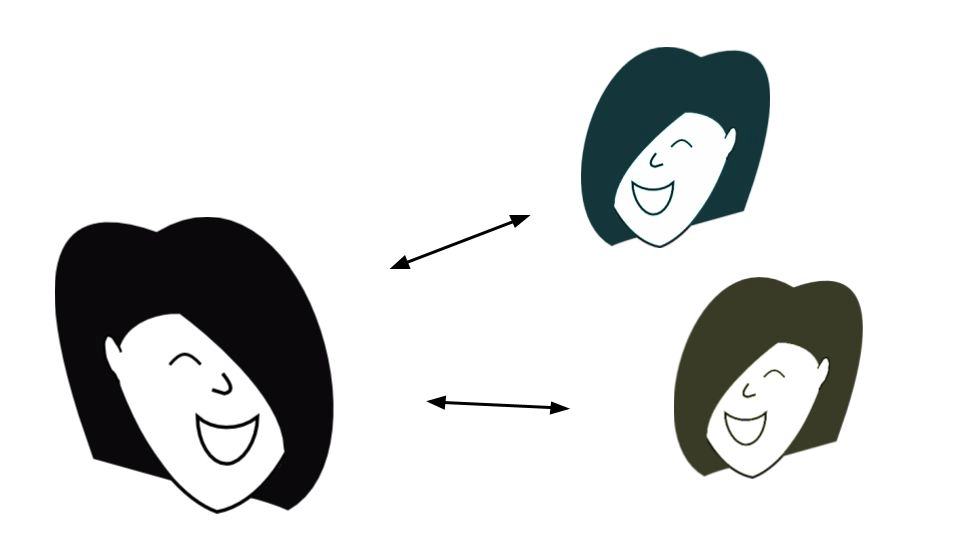
The marketing director advises that it’s still the holidays across the pond.
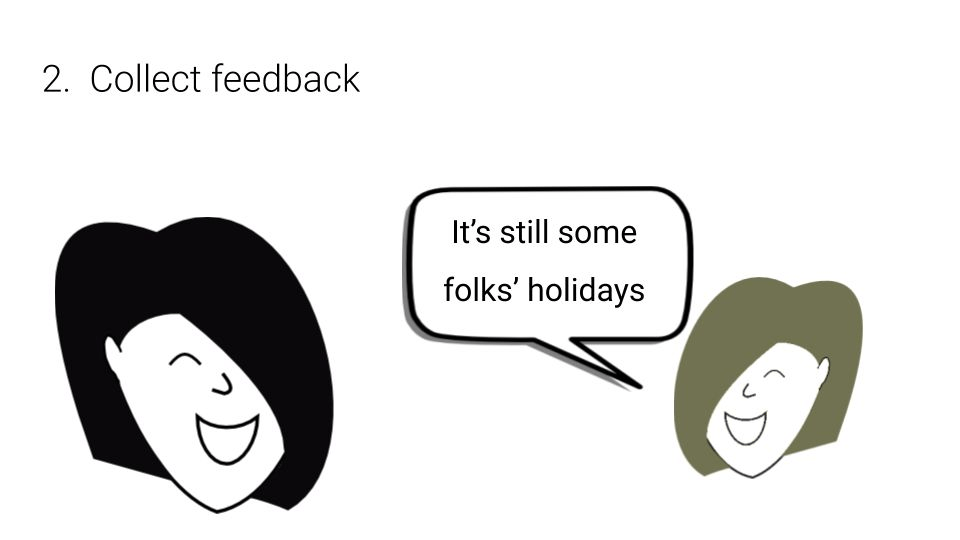
Sam is a quick problem solver.
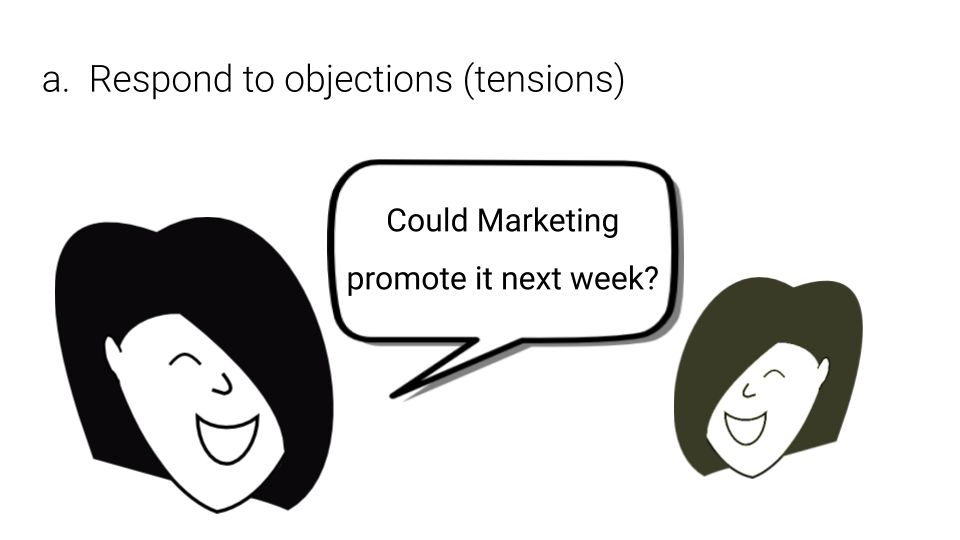
Confident that there was sufficient feedback and that the marketing director’s tension was resolved – amending the intention (push it next week, not immediately), Sam publishes the website and schedules it for promotion, alerting the marketing team of their responsibility.
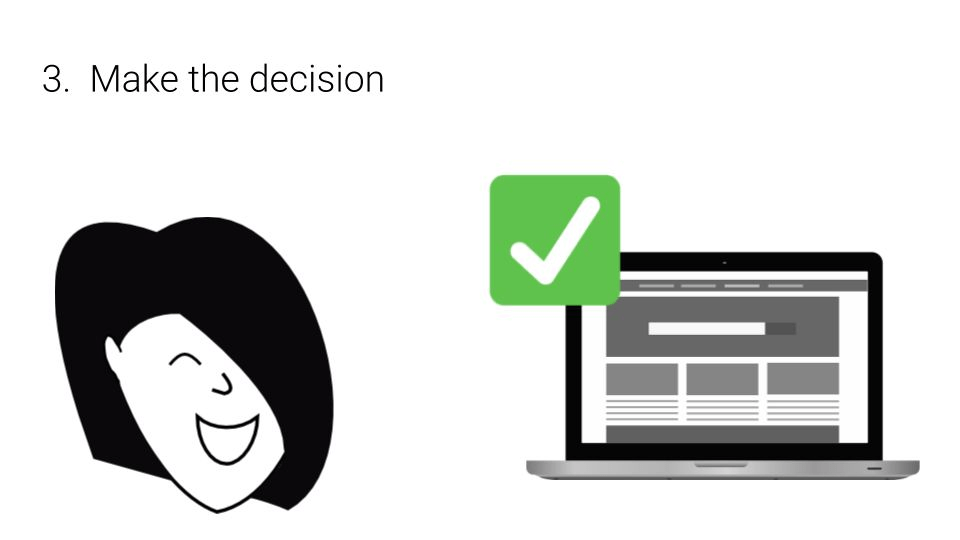
Sam documents the decision…
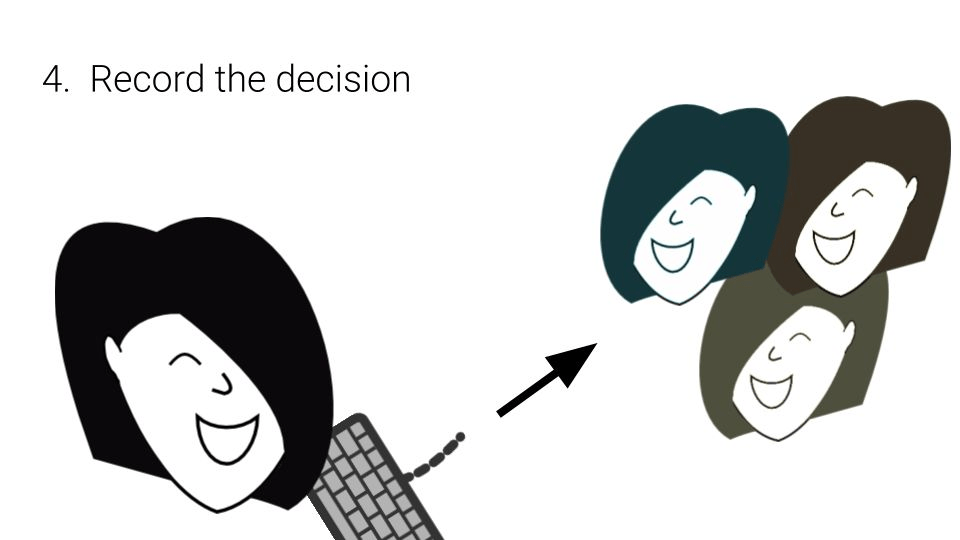
…putting it somewhere the team could see it.
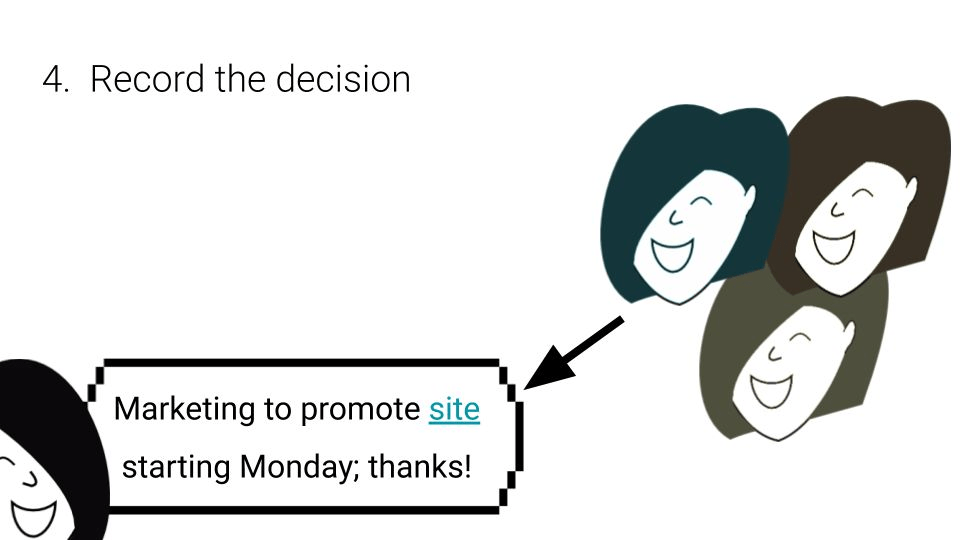
Here’s the steps that Sam took:
- She stated an intention
- She collected feedback
- She responded to concerns (and tensions)
- She made the decision
- and communicated and recorded it adequately.
You’ll notice that Sam has made a decision that calls for others to execute the work. To get all the benefits, decisions made by advice process need to be considered the decision of the team or organization. You don’t have to make advice process available for every kind of decision, but encourage everyone to stand behind those you do. That said, it’s important to note that decision makers are accountable for their decisions, even if there are other people responsible for completing any tasks that are called for. In most cases, aligning power with accountability will get you better results.
Tip: Ideally (not depicted above) Sam has explained why she made the choice, for the record and for team learning.
How it works online
Challenges and Tips
Learn more about what groups successful in using Advice Process have in place to support better outcomes with this process in our comprehensive guide, which includes best practices for feedback and considerations about organizational culture.
Your first experiment (checklist)
For your first advice process experiment, you might want to check that the people who need to be involved or aware of it can answer the following:
- How will we use advice process, and when? Limitations?
- What good could come from adopting this technique?
- How does this affect my work?
- When will decisions be reviewed?
Not just a tool
Advice process, as a tool, makes good business sense, and it can deliver even more than that. How would it feel if you knew you had full support of your team the next time you needed to make an important decision? Advice process – and, moreover, a culture of advice process – may be used to transform an organization’s philosophy or overall governance and operations. Some teams have significantly grown their capacity by adopting it more deeply.
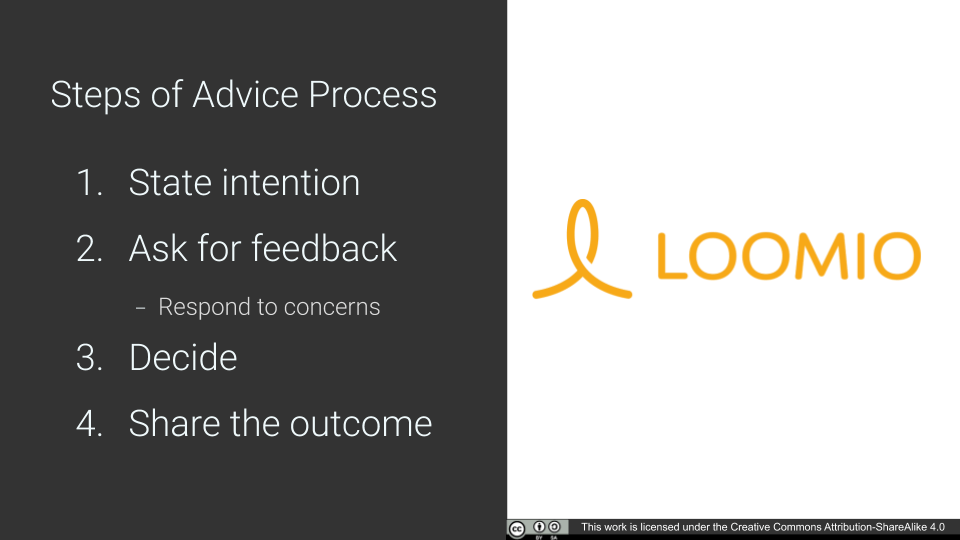
You can quickly make better decisions by using advice process. All it takes is a proposal, asking for feedback, making an informed decision, and sharing the outcome. You’re already on your way to a more engaged team achieving faster, higher quality decisions.
Sound good? Share this video! Chat with your group about it… try it out and let us know how it goes! Try it on Loomio, for free, today.
Full guide and Video
Learn the above basics via our video, below, or The comprehensive guide... with a bigger list of tips, challenges, and ways to move your group forward and get the most out of these tools.
Credits
¹ Modified from GrantTree
² “A culture that is comfortable with healthy conflicts” –James Bloementhal (Fitzii, now Ian Martin Group)
³ From Rich Bartlett’s article, “Out beyond consensus…” in Better Work Together
⁴ Thanks again to James Bloemendal (Fitzii, now Ian Martin Group)
Try it on Loomio, for free, today.
Cheers! Happy world-changing to you and your groups!
Tags: Guides
Would you like to keep in touch?
Join the Loomio newsletter to hear about product updates, upcoming events and stories from organizations using Loomio.
Delivered every 2 or 3 months.
